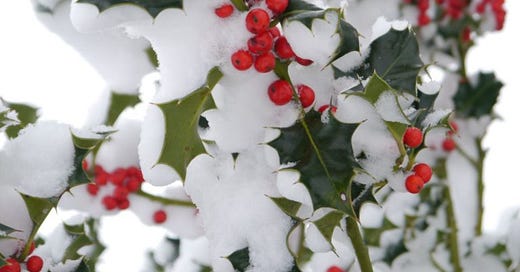I thought I would write something about the true meaning of Christmas colours maybe starting with Sir Gawain and the Green Knight and its pre-Christian roots in Druid sun worship with the Holly King battling the Oak King on the winter solstice, but getting to the bottom of the meaning of colours, especially for some belief system of the past, seems to b…
Keep reading with a 7-day free trial
Subscribe to The Colour | Newsletter | Lab | Community to keep reading this post and get 7 days of free access to the full post archives.




